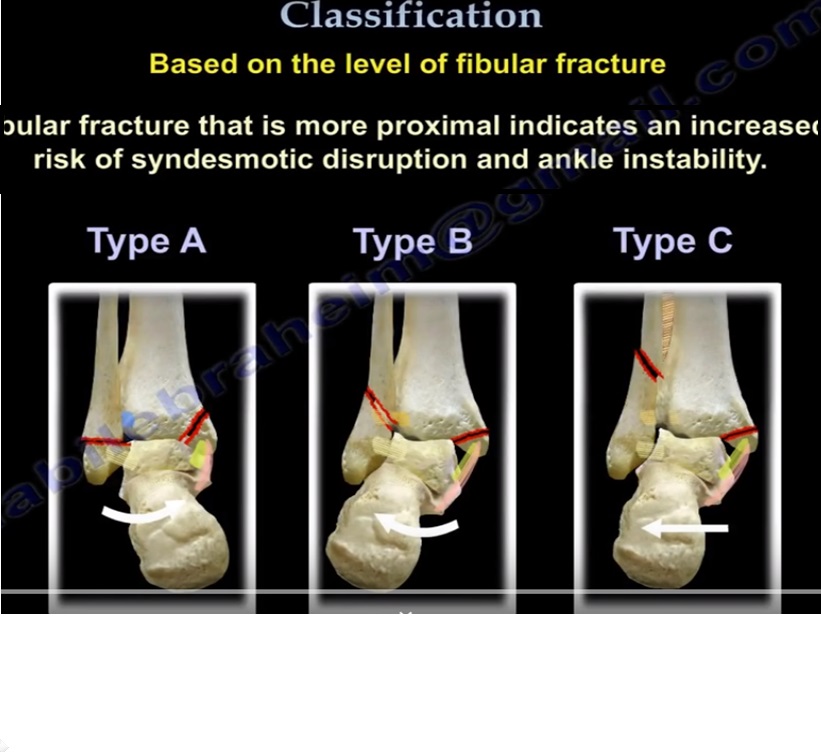Courtesy: Prof Nabil Ebraheim, University of Toledo, Ohio, USA
Fibular fracture that is more proximal indicates an increased risk of syndesmotic disruption and ankle instability.
This classification is based on the level of fibula fracrture
1. TYPE A
- Internal rotation and adduction injury.
- Fracture of the fibula below the level of tibial plafond.
- Usually an avulsion injury from supination of foot.
- May be associated with oblique or vertical medial malleolus fracture.
- Syndesmotic disruption is rare but can occur.
2. TYPE B
- Oblique or Spiral fracture of the fibula near or at the level of the syndesmosis.
- External rotation injury.
- May be associated injury to the medial structures or the posterior malleolus
- About 50% syndesmotic injury.
- This fracture probably resembles the supination/external rotation injury in Lauge-Hansen Classification.
3
. TYPE C
- Abduction injury.
- Fracture of the fibula above the level of syndesmosis
- Syndesmosis disruption always occur
- This is associated medial injury in almost all cases
- Include Maisonneuvre fracture pronation/abduction or pronation/external rotation
- In general,Type C ankle fracture simulates an abduction/external rotation injury in Lauge-Hansen
Classification.

Leave a Reply